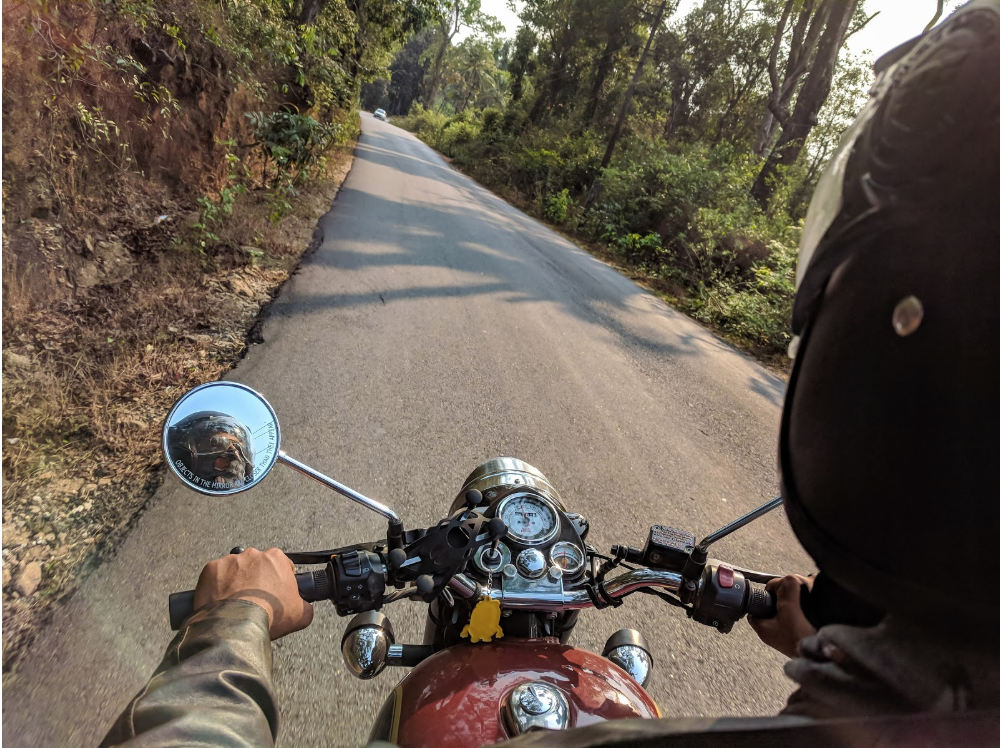
The two-wheel culture is growing in popularity every day; we see more and more people opt to ride to work, to class, or just ride for fun. Some claim their decision is cost-driven and that it's simply more economical to drive a motorcycle than a car, others select a traditional bicycle work commute because it's healthier. Technology for this culture is attempting to keep pace. New AR equipped motorcycle helmets are being produced with a rearview camera, navigation, music, phone call, SOS alerts, among other features. This is awesome, but, does that make it safer for the vehicle operator?
Safety should be the #1 priority among bicycle and motorcycle enthusiasts. AR helmets are a good idea because this technology eliminates the use of holding a phone while riding. But, riding a two-wheeler is not like driving a car, riders need to be extremely attentive of the road without distraction. Older technology, like Bluetooth helmets, aim to reduce rider distraction, but AR helmets can easily be considered a whole new level.
Some new AR helmets include a display hud in the helmet or project navigation or rearview camera imagery to the visor, headset speakers and microphone for phone calls and music, and some even send SOS alerts in case of a fall and the possible inability to a interact with a phone due to injuries. Having all these features sounds like a good idea on paper, but I keep asking myself, wouldn’t this be very distracting?
Only with true eye-tracking research, we can measure driver (rider) distraction. As researchers, we need to make sure these new technologies are up to par with today’s riders safety. Eye tracking along with Driving Activity Load Index (DALI) and the SUS (System Usability Scale) are some basic ways to measure driver distraction. DALI is a 7-factor questionnaire that measures drivers subjective workload and possible difficulties and constraints after the test with regard to their driving task. DALI factors include:
- Global Attention Demand - Mental (i.e. to think about, to decide…) visual and auditory demand required during the test to perform the whole activity.
- Visual Demand - Visual demand required during the test to perform the whole activity.
- Auditory Demand - Auditory demand required during the test to perform the whole activity.
- Tactile Demand - Specific constraints induced by tactical vibrations during the test.
- Stress - Level of stress (i.e. fatigue, insecurity, irritation, feelings of discouragement) during the whole activity.
- Temporal demand - Pressure and specific constraint felt due to the time pressure of completing tasks during the whole activity.
- Interference - Disturbance to the driving task when completing supplementary tasks via the voice and tactile commands.
The System Usability Scale (SUS) is also a way to measure the usability of the in-helmet AR concept. When a SUS is used, riders are asked to score the following 10 items on a 5 points Likert scale, with responses that range from Strongly Agree to Strongly disagree:
- I think that I would like to use this system frequently.
- I found the system unnecessarily complex.
- I thought the system was easy to use.
- I think that I would need the support of a technical person to be able to use this system.
- I found the various functions in this system were well integrated.
- I thought there was too much inconsistency in this system.
- I would imagine that most people would learn to use this system very quickly.
- I found the system very cumbersome to use.
- I felt very confident using the system.
- I needed to learn a lot of things before I could get going with this system.
These factors can be used to evaluate the usability and driver distraction of AR helmets. Helmets are the single most important accessory a rider can have for safety. With AR helmets hitting the market, as researchers, we need to understand how distracting these can be, are they too much and is there a number of features that can augment the driver experience but also improve their safety. To learn more about measuring Drivers Distraction, contact us at info@keylimeinteractive.com.
READ MORE: The Social Experience of Digital Reality Use, What's the Difference Between VR, AR, and MR?, UX Research in a Fast-Paced Development Cycle, The UX of Running Apps







Comments
Add Comment